Be Craft Beer - Batch 1
31 March 2019
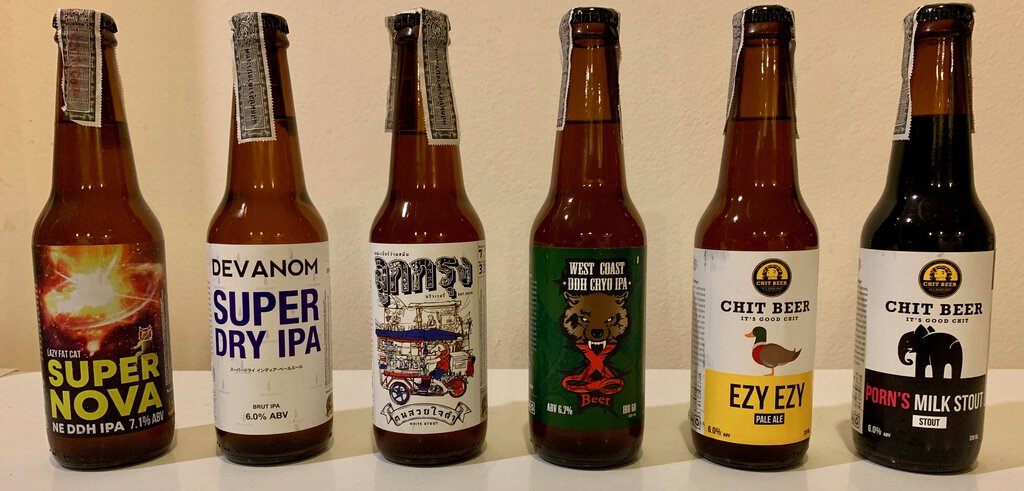
I can hardly believe that these lovely looking bottles have been chilling in my fridge, untouched, since delivery three weeks ago. But I know which one I’m going to start with, now the time has come, as I intend to drink them in their natural order.
Pours a mid-golden colour with a good head. Tropical and piney notes hit the nose as soon as it is in the glass, with just a hint of something catty in the background. Substantial, malty body, with a medium finish, and the hops linger in the mouth and nose well after the beer has gone down, giving citrus and grapefruit with a slightly dank edge. A solid and very quaffable pale, with a decent bitterness and good hop presence.
The Be Craft Beer project was delivered as something of a new year’s gift in a video posted to YouTube in early January by P’Chit, Thailand’s most prominent craft beer agitator. Under the project, selected Thai brewers each design a beer which is then pre-sold via the Be Craft Beer website. Once sales targets are reached the beers are brewed at Stone Head’s brewery in Koh Kong, Cambodia, and sent directly to customers after packaging.
Each brewer and beer was introduced in a series of short videos released over the couple of weeks following the project announcement. Needless to say, as soon as the sales website was launched I put in my order for four bottles of each the six beers. This wasn’t a hard sale to make, if I’m honest - but the videos introducing the project were exceptionally well made, and did a great job of presenting the beers in a thoughtful, informative, but approachable way.
Slightly hazy, light gold pour with a small head which lasts well. On the nose I'm getting green fruits, gooseberrys and acidic notes. Crisp, yet malty body, with a very dry finish and just a hint of bitterness, backing up delicate hop aromas of tropical fruits and wet grass.
As promised, my box of beer arrived early March, and I chilled half of it immediately, waiting for an opportunity to dig in. My criteria for indulgence were simple: I wanted to sample all six beers in one session, and I wanted to do it on a fresh palate. Hence the delay between reception and consumption. And so we arrive at the last day of March, a Sunday afternoon (hiding, as best one can, from the Chiang Mai smog - I feel the pollution affects my palate and ability to taste, just as much as my health and ability to feel happily human).
Hazy orange pour, with sweet, tropical fragrances bursting out of the glass. Soft and light in the mouth to begin with, but that initial impression soon gives way to an explosion of fruitiness with a dank undertone in the finish. This whole flavour experience happens towards the front of the palate, leaving merely a faint juicy memory after the swallow, encouraging another. Especially easy to sup, despite the highish ABV.
And so, mid-way through the tasting, I can say that things are going well. I’m loving these beers - and that’s a relief. For anyone unfamiliar with the Thai craft beer scene, it is essentially impossible to open a micro/craft brewery here due to brewing laws maneouvered into place by the macro-brew oligopoly. Despite that, Thai craft brewing has been thriving in recent years - partly underground, but largely through the practice of Thai brewers brewing abroad at contract breweries and importing the product.
Mid-coloured, almost clear pour with a small head. Caramel and light tropical fruits on the nose. In the mouth, this is mainly about malt - a weighty, malty body with a significant caramel sweetness accompanied by understated hopping offering pine and slightly floral tones. A sturdy, filling ale, subtle in its bitterness and hoppiness, a little old-school, and that's not a bad thing.
Contract brewing has its limitations, though, in terms of control over the details. And many of the packaged Thai craft beers now available have flaws which are more reflective of processes, procedures or equipment limitations at the contract breweries than the brewers themselves. In contrast, the beers I’m currently tasting are all produced at Stone Head’s brewery - which, while it is not actually in Thailand, is Thai owned and run. And, literally, just across the border.
Thick with a firm tan head. Plenty of roast and chocolate on the nose. Mouthfeel is quite slick and there's a medium amount of body for the style. The flavour is bitter chocolate and coffee, with some roasty sourness coming through. On the outbreath, I'm getting roast barley. A medium finish, avoiding any cloying sweetness, though it does leave its lactic slickness in the mouth - and down the side of the glass.
I’m enthusiastic about this project as it works on several levels. It raises awareness of craft beer locally (and, almost passive-agressively, awareness of the legal absurdities of brewing here - all the bottles have “Made in Cambodia” on the label). It provides what could become a workable interim model for Thai craft brewing (between out-of-country contract and in-country, brewer-owned brewing). And it opens access to Thai craft beer at a lower price point than is currently normal (without the markup that inevitably comes from contract brewing).
Hazy, mid-brown with a solid white head. Chocolatey nose, full aroma like a brownie. Rich and luxurious in the mouth, still putting me in mind of that brownie, but now with vanilla ice-cream too. Then, subtly, slowly, the roast asserts itself - this beer is big and dessert-like, but ultimately not sweet. The finish is burnt, bitter and adult. Not overly boozy, but complex and deep. A late-night beer.
I have enjoyed every one of these beers. They are well brewed, well packaged, and each expresses or plays off its style with confidence. I believe they’d stand their ground in any market or competition in the world. They are testament to how far Thai brewing has come both in terms of technical mastery and creativity within (and without) the established boundaries of beer styles.
It was reassuring to see how quickly sales numbers ramped up once Be Craft Beer opened up their ordering system. And it is even more reassuring to see that the project seems to be growing (partners have recently been added, to increase retail distribution for future brews). But then it’s also not surprising - the demand for craft beer is very strong here. My hope remains that a project like this ultimateley plays a part in raising home/nano/micro-brewing to the national agenda. At some point, even the establishment has to realise just how absurd - and costly - those “Made in Cambodia” labels are.
Spent Grain and Trub Loaf
16 March 2019

The cozy relationship between breweries and bakeries is something I recall hearing about since I was a kid. Both baking and brewing use yeast; but both also produce it. Brewing, in particular, produces large amounts of yeast as a by-product. Some may be recycled for the next brew - but much is dumped. And, historically, some has ended up in the bakery next door.
Barm cakes were made using the krausen scooped off the top of fermenting ale - they were a favourite in northern parts of the UK (where I grew up), best enjoyed stuffed with chips. But trub, the sedimentary yeast-sludge from the bottom of the primary fermenter can be used too. For me, this passed from the quasi-mythological to the realm of urgently necessary practical experiment when I stumbled upon a well-written and detailed article, complete with recipe, a year or 18 months back (which, sadly, I can’t track down right now - I’ll keep trying). One afternoon, after bottling, trub in hand (well, glass jar), I set about baking, vaguely following said recipe. The yeast was very active, and before long I had a couple of well risen loaves. They looked great. But they tasted awful. So, so bitter and grassy. I realised then that trub from an American IPA wasn’t a good starting point.
Two weeks ago, though, while bottling a stout I recalled an earlier thought that the endeavour may be more successfull with the waste from a sweeter, less hoppy brew. So I put a few cups of the black, 1.014 FG oatmeal stout sludge in a jar and threw it in the fridge. To be used in due course, or discarded with disgust months later, as fate would have it.
I’ve recently seen a few images and posts by bakers using spent grain - the depleted and oft-discarded crushed malt (and adjucts) mashed in hot water as the first step of brewing. Earlier today, moments before the hot grist from a pale ale was scattered in the garden, that mind-seed sprouted, instinct kicked in and I held back a pot-full of the still steaming mulch. Thus, a plan was born. And the happy fate of the jar of black sludge was sealed.
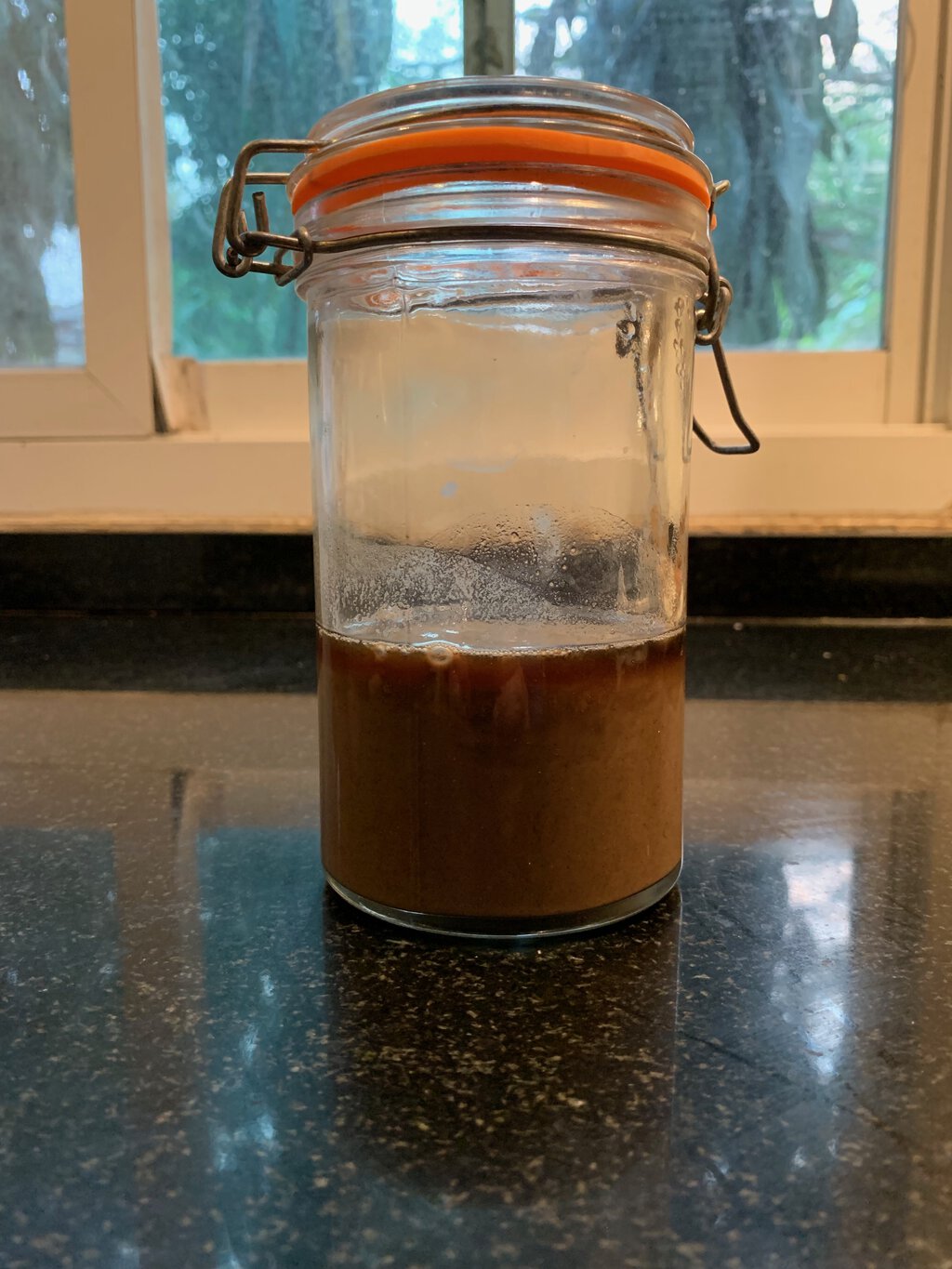
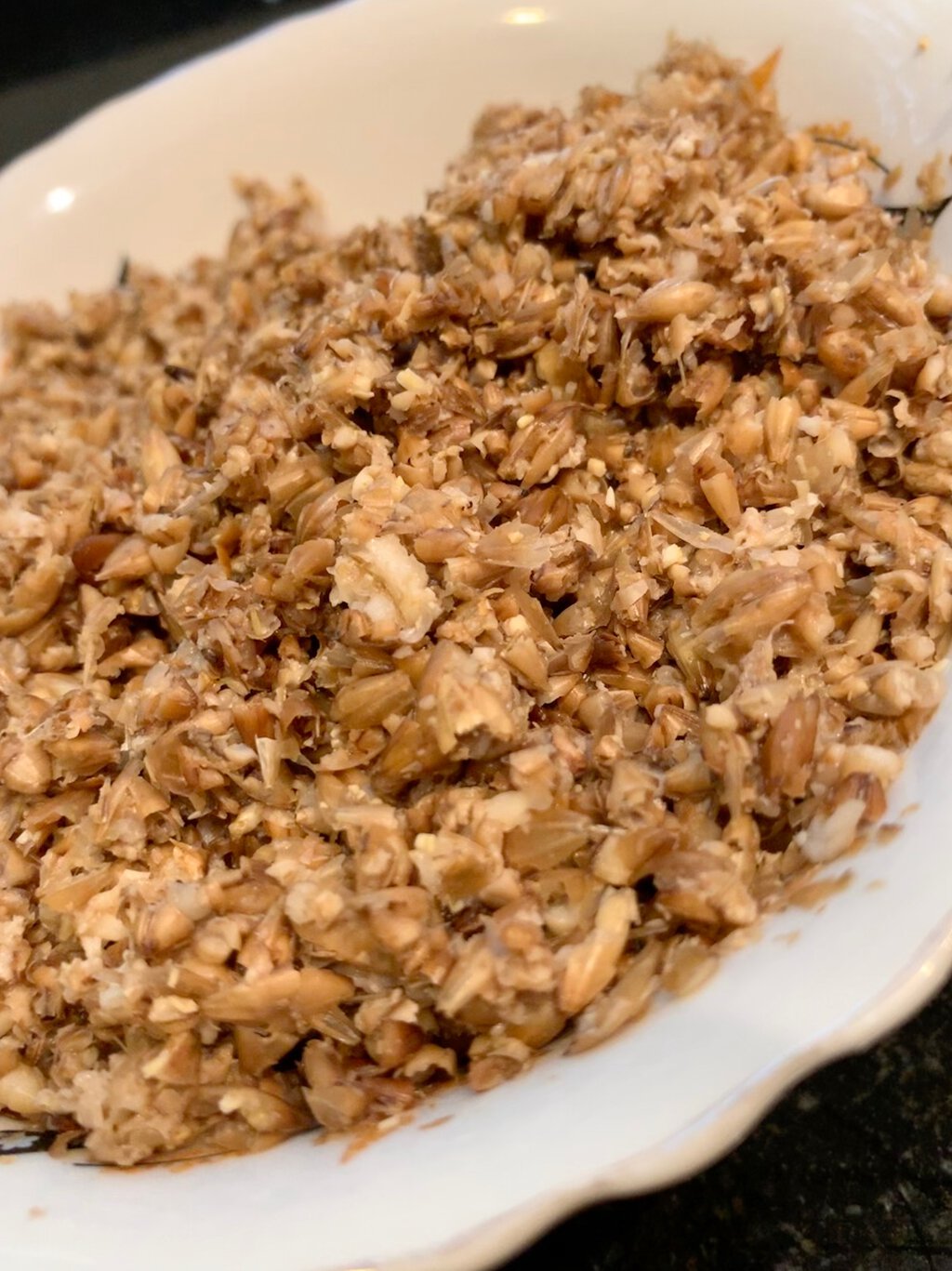
Not having any recipe to work from, I started simple. I mixed 125g of spent grain with 375g of strong white flour, then added 7.5g of salt (1.5%, if counting the grain as a flour). To this I added 100g of trub. Figuring the trub might be 50% water/beer, I added 275g water for a target hydration of 65%. There was a lot of guesswork in this - and as soon as the dough started to come together, I realised how far off my liquid guesses were. For this was a very wet dough.
I left the dough to autolyse for 20 minutes before making my next move. It was still fairly unmanagable, so I added more flour, until in the end there was 550g of strong white. This gave me a dough which behaved as though it was around 70% hydration. In the end, I think the water portion of the trub was far higher than I estimated, and there was also quite a lot of liquid in the spent grain. On top of that, the spent grain didn’t absorb any liquid at all (of course - it was already wet).
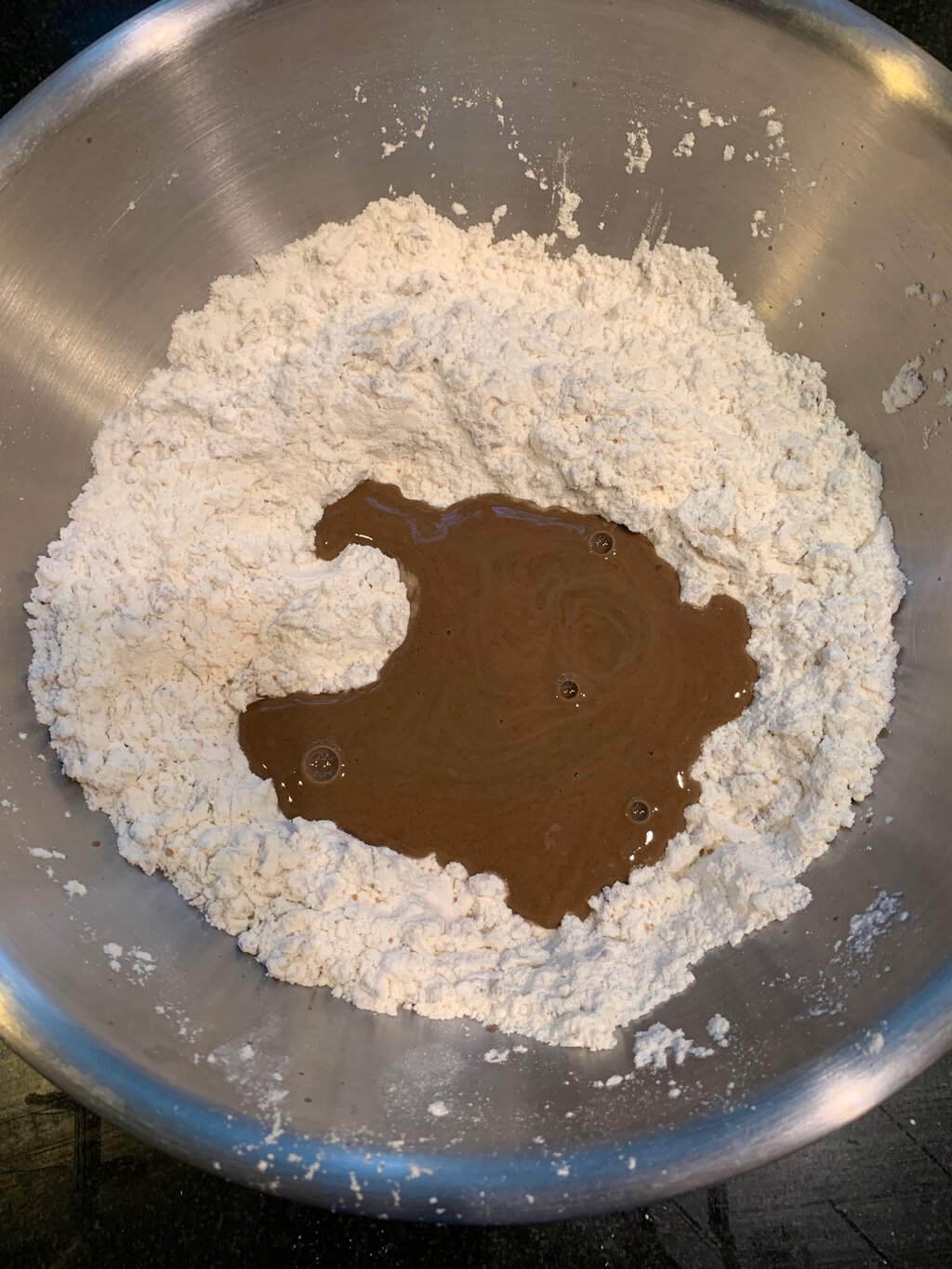

Anyway, after an hour’s bulk, the dough has risen to around twice original volume. I went ahead an shaped it and put it in a banneton. As the yeast seemed active and it was a fairly hot evening (around 30 celsius) I was concerned about over-proofing. So I gave it only 30 minutes before baking at 220 for around 40 minutes.
The loaf looked pretty good - it rose well, and had a deep colouration. I was already too full - and it was getting too late - for immediate tasting though.
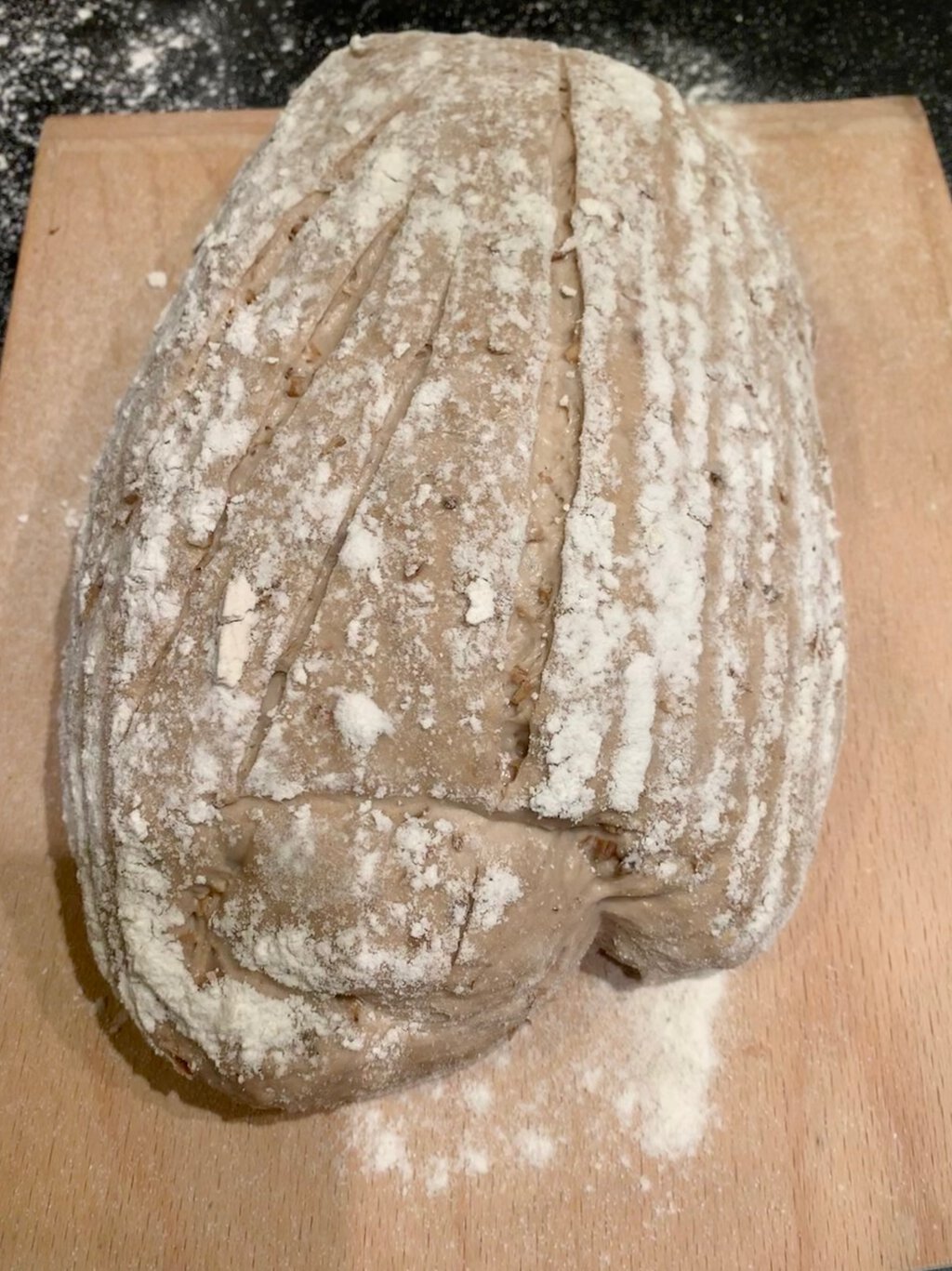
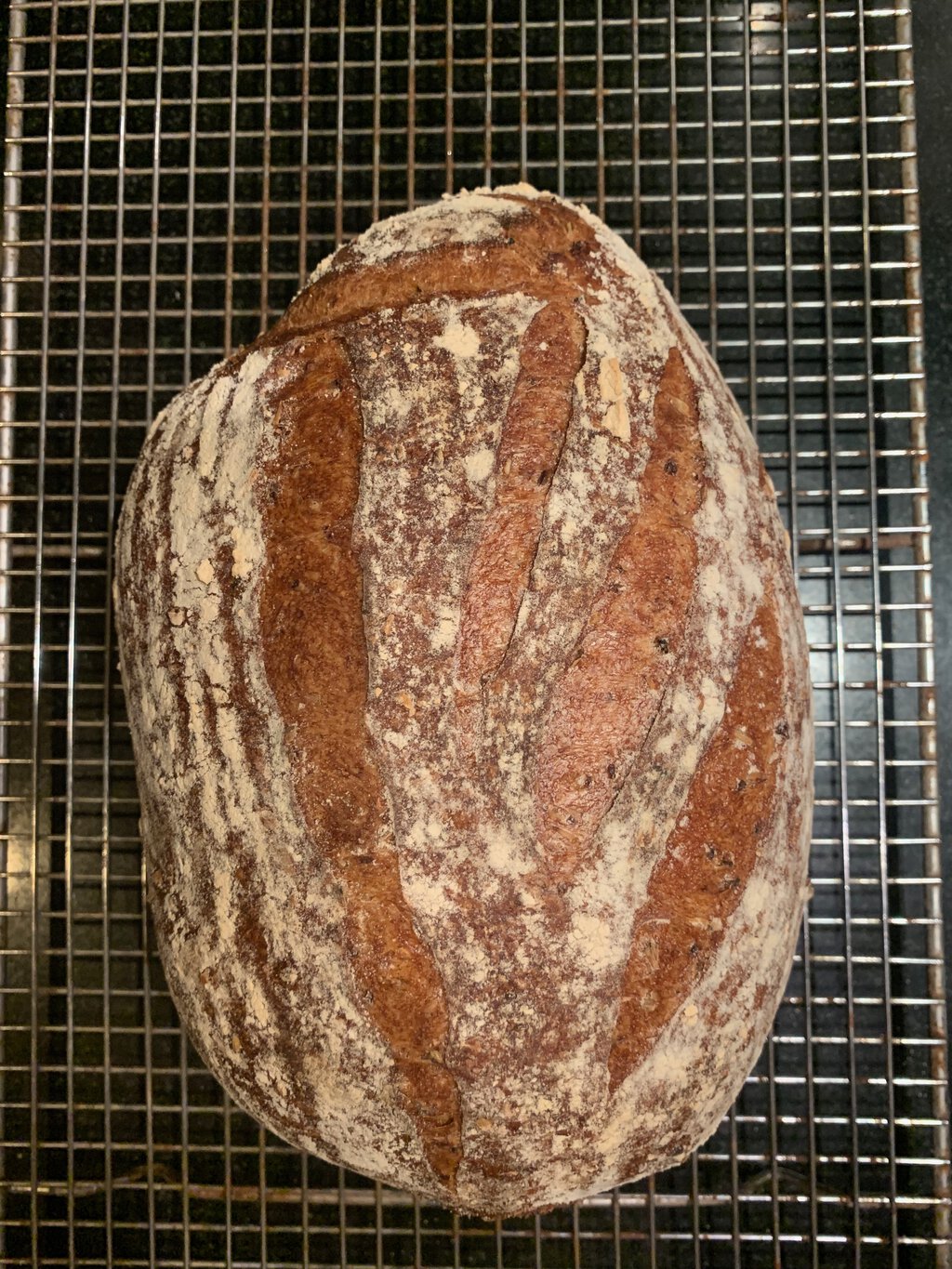
And so the next morning, having made coffee, I cut a few slices. The crumb was ok, not too tight, and the texture was good though moist (it could have done with a higher temperature or longer bake to drive off more liquid). The flavour was far better than the first try with IPA trub. But I knew immediately that this was a bread which needed to be toasted. After a light toasting, it showed its colours well, with a pleasant, slightly sweet, nuttiness and just a hint of bitterness on the after-taste, a reminder of its origin.
Notes for next time: Would take the approach of incorporating water gradually to hit desired hydration (as this is the hardest thing to control). I’d probably also add some wholewheat flour into the mix, and treat the spent grain as a soaker, not a flour - which in retrospect seems like the obvious thing to do. Also - really must try baking a balm bread…
No feedback yet. Share your thoughts.
Japan Beer Sojourn, Part 3 - Japan Brewers Cup 2019
25 January 2019
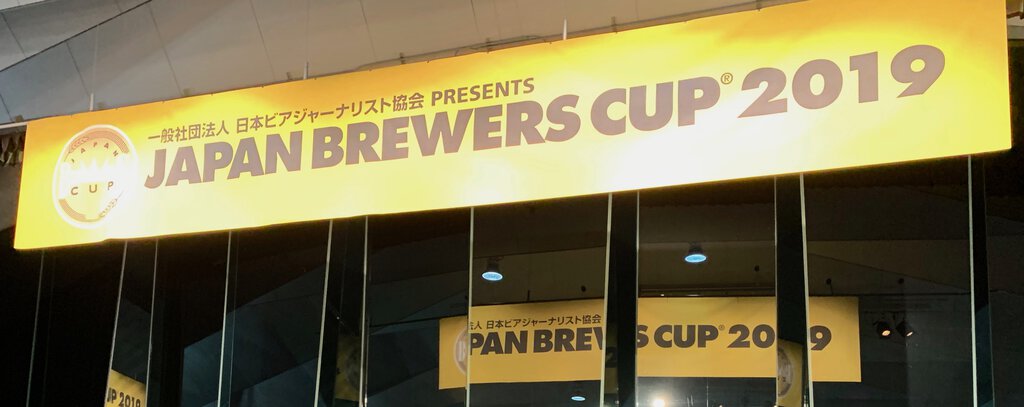
In some sense, this evening marked the goal of the trip, the Japan Brewers Cup in Yokohama. We wandered to the venue - which is a large hall at the end of the Osanbashi Ferry pier in Yokohama Bay, after an afternoon strolling around the nearby Red Brick Warehouses. The venue is stunning, lying at the end of a long wood-planked and organically curved concourse passing over the passenger ferry terminal like a hill.
Back in my room now, starting to write, my overwhelming reflection is what a high quality, civilized and well organized event this was. With, I would guess, a couple of thousand people drinking and eating, the atmosphere was never anything but light, friendly and fun with no hitches all evening. None of the beer vendors was particularly crowded. The live entertainment was cool, even to a non-Japanese speaker. And the bathroom queues moved with typical Japanese efficiency.
From the point of view of a visitor from Thailand (where the craft brewing scene is active, but limited by antiquated, protectionist legislation), it was interesting to see so many Japanese breweries with foreign brewers and representatives. That’s not to say that foreign influence is required to make good beer, of course: simply that having an open brewing industry looks to be a healthy model in terms of beer quality and the economy.
One manifestation of this is the Japan Beer Times (many thanks for the free back issues). Published in both English and Japanese this is a fine examplar of an artifact which both describes and participates in the creation and growth of an industry and culture.
And the beer? Well, it was plentiful and excellent. Out of principle, I stuck exclusively to Japanese brewers, with three exceptions (one accidental, one deliberate, and one on the way out), though several overseas breweries were represented and would have been very tempting under almost any other circumstance. My strategy wasn’t too focussed or strong. But here are some brief notes, for what they are worth. I’m sure my palate and phone typing skills weren’t really up to the magnitude of this task, but I gave it my best.
Awesome start. Hoppy, fruity nose, soft mouthfeel, very fresh.
Big bubbly head. Melon, lemons, peach, bubble gum over a light body with firm bitterness. Fresh, fun drinking.
Big foamy head. Not much aroma. Malty body with a solid bitterness. Woody hops. A very dark and toasty taste for ipa. Different, and an interesting, slow sipper.
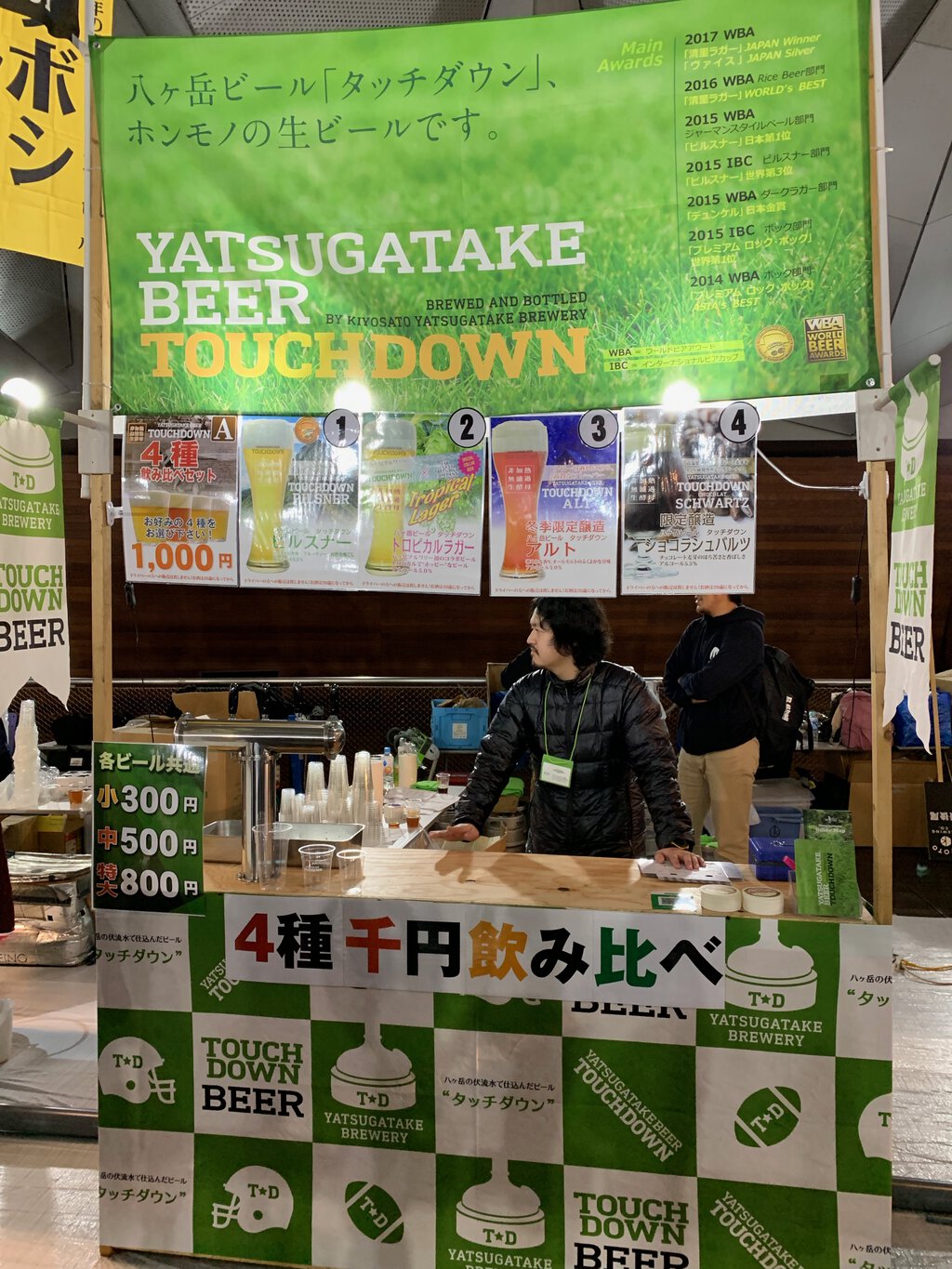
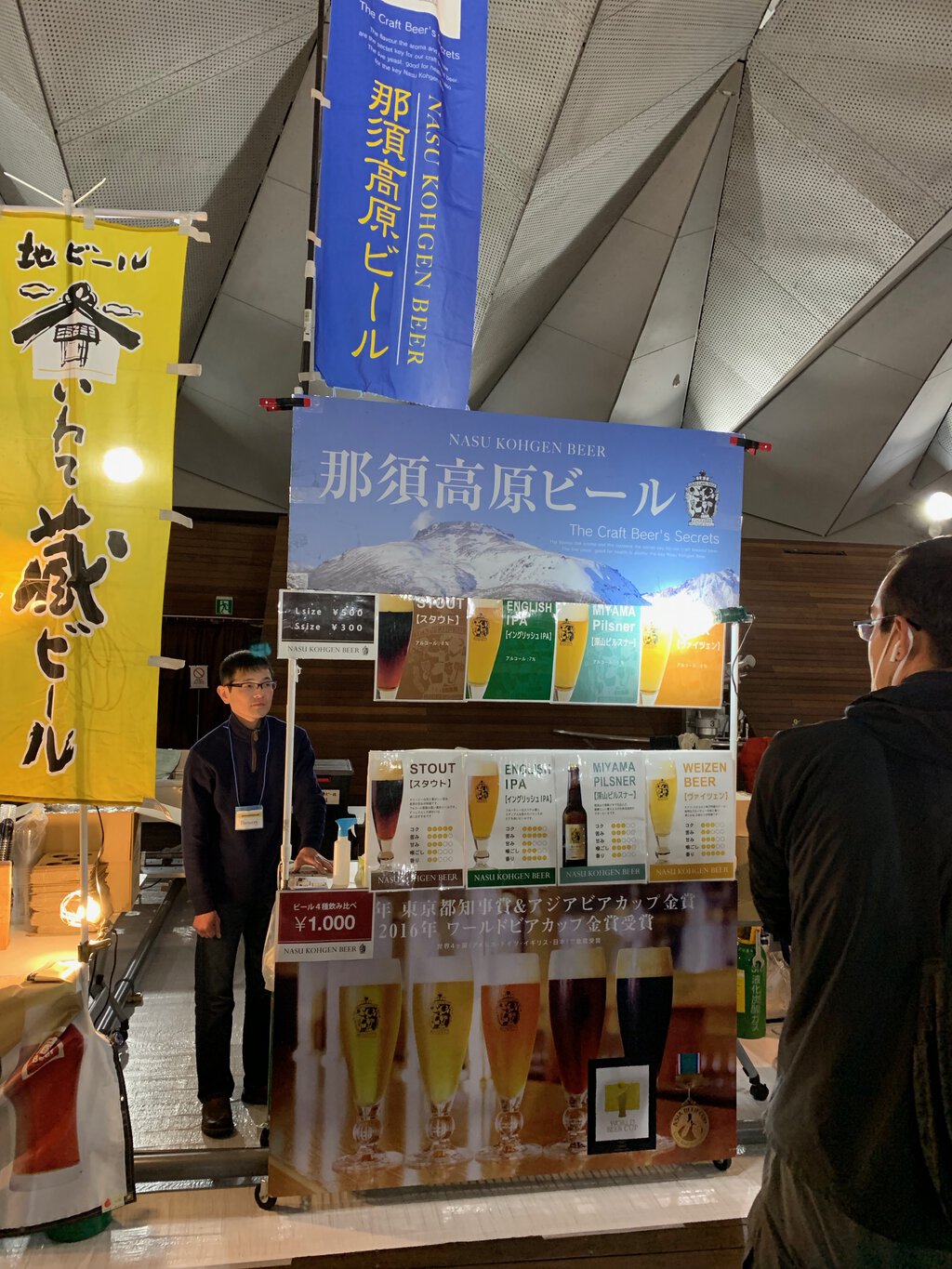
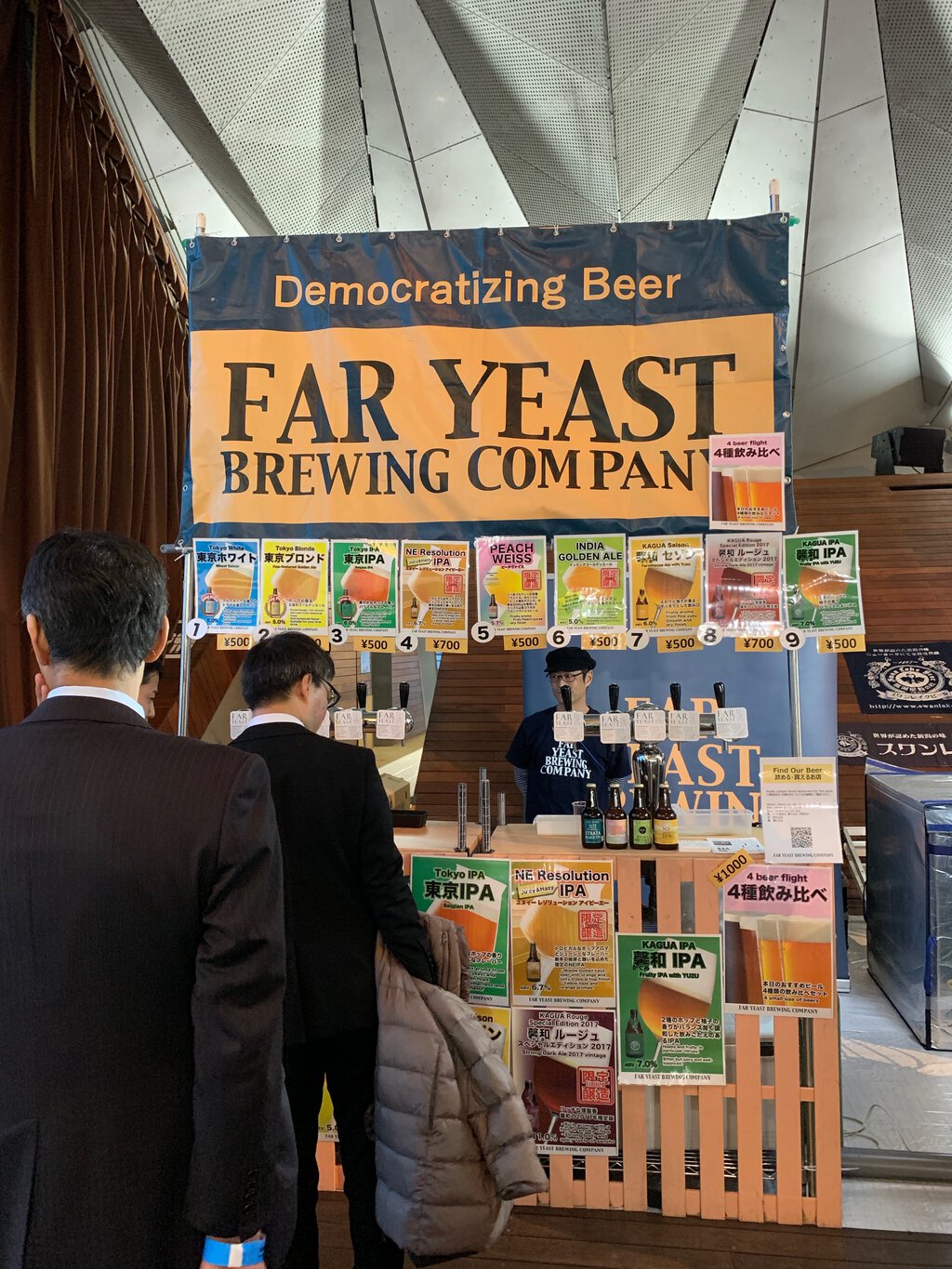
Murky orange with almost no head. Sweet, sweet citusy aromas. Sweet zest on the first taste, quickly bittering and drying with a funky note on the nose. Little carbonation. Lost of farmhouse.
Solid maltiness and hops in good balance. The bitterness lasts well. A full bodied pilsner that makes me want more.
Malty with caramel and a hint of roast. Mild hopping. Quite English in style, close to a strong mild or even brown ale.
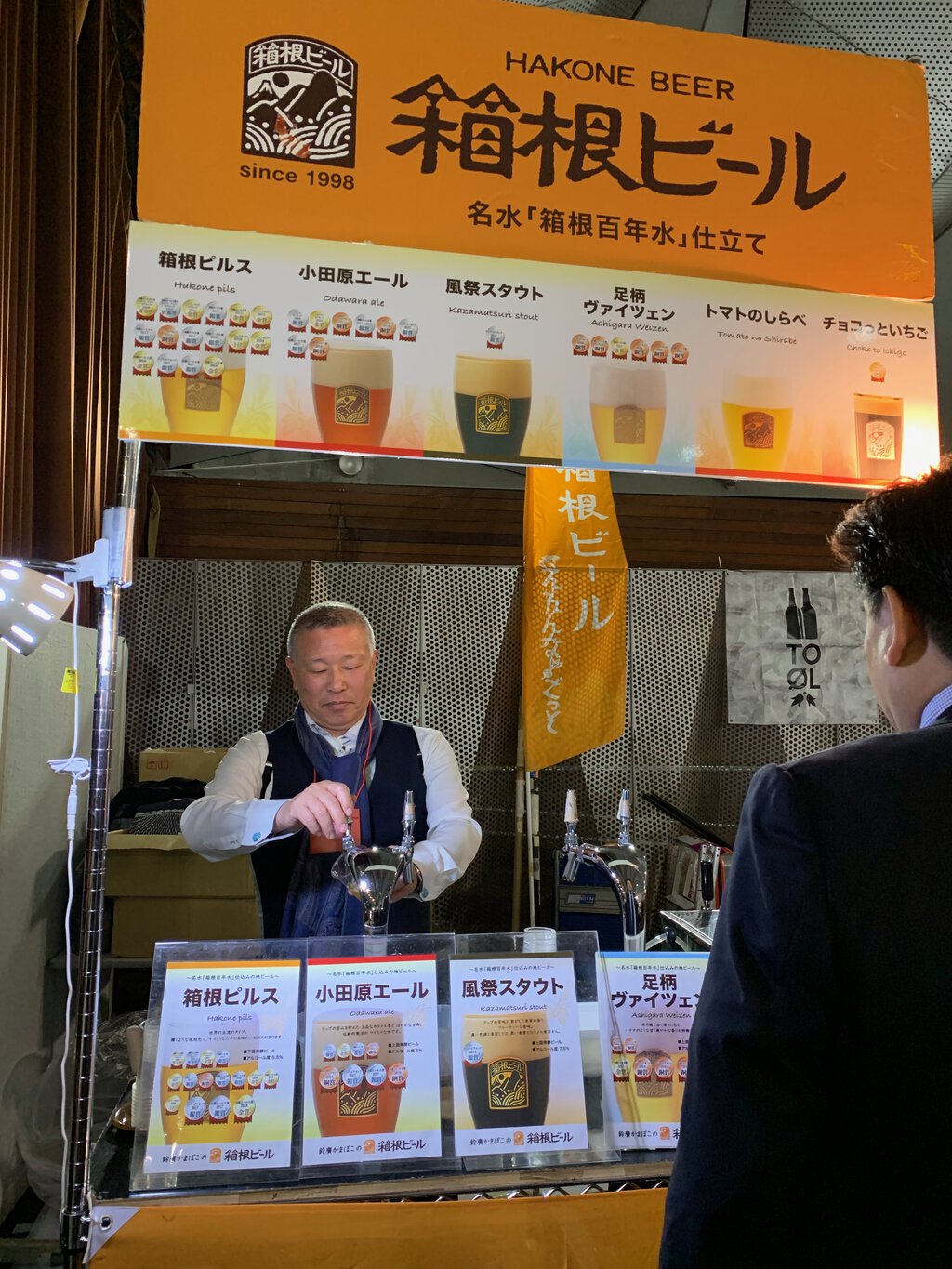
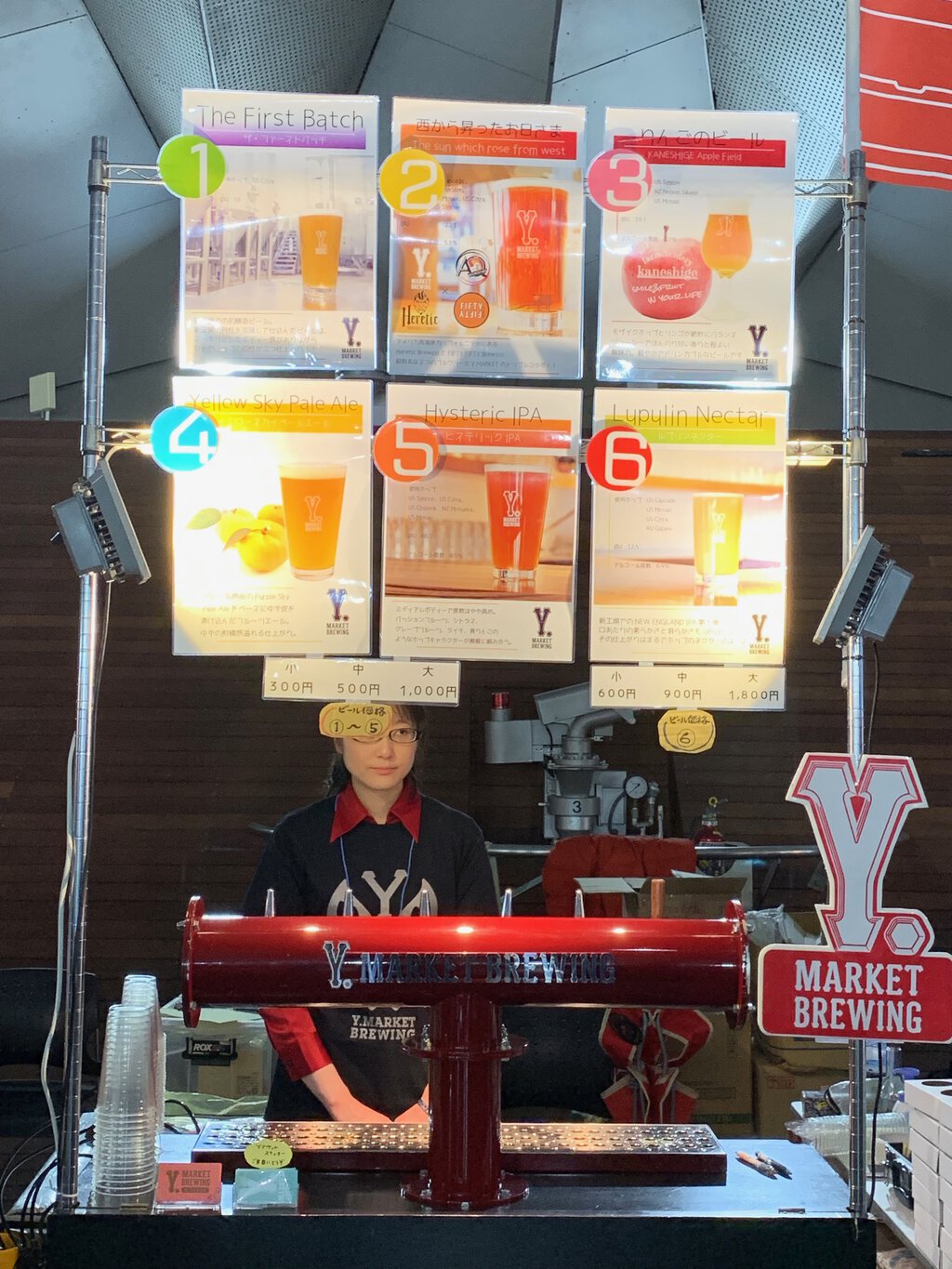
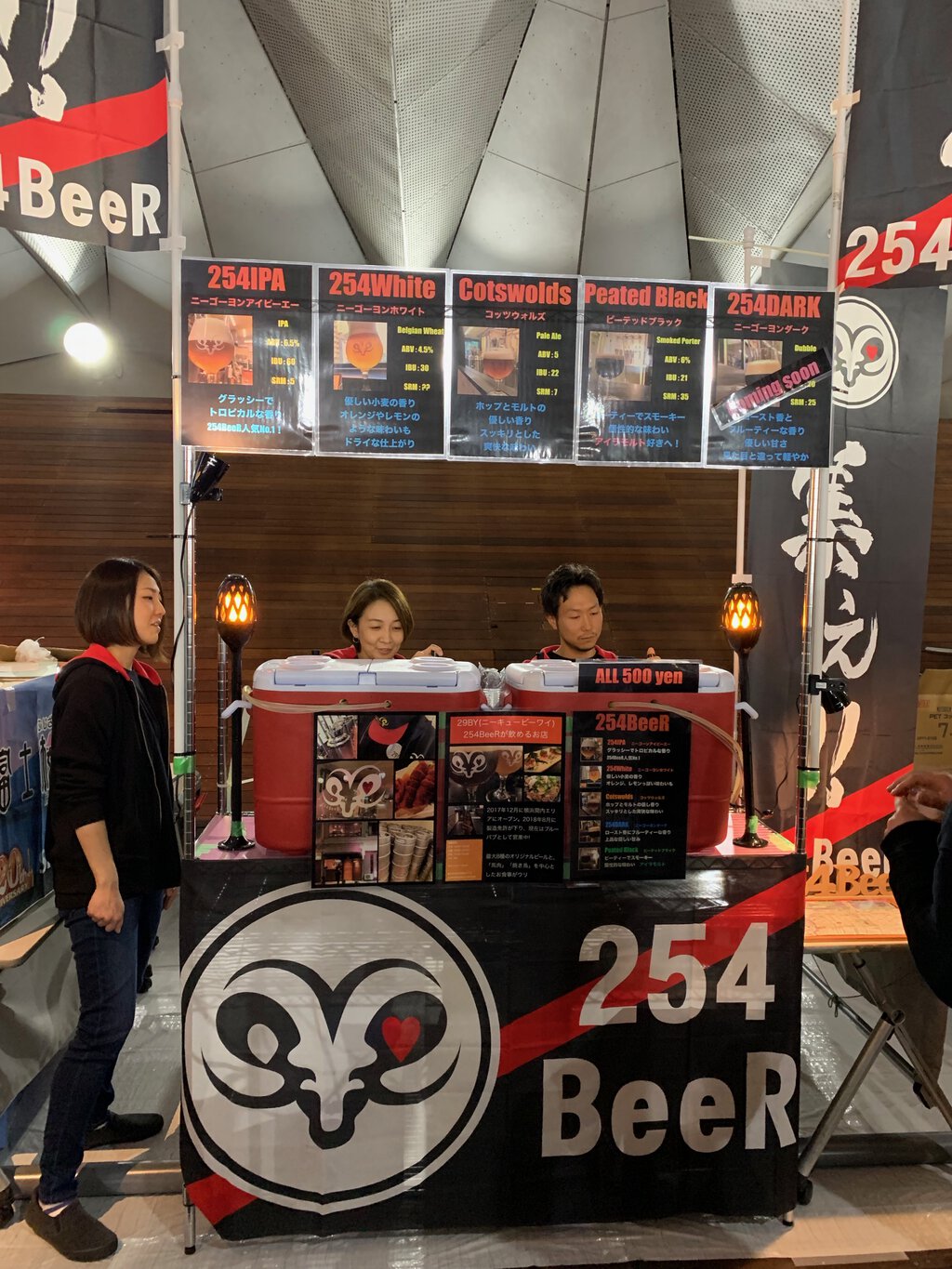
Cloudy yellow. with no head. Grapefruit and passion fruit aroma. In the mouth, the whole tropics with a pine fringe. Minty pineapple juice. I don’t want to use the word lush, but there it is.
Small brown head. Stong medicinal peaty nose. Very smoky and medicinal in the mouth too - could almost be drinking a whisky. There’s a solid dry body to back up the smoke. But that smoke really does linger. Interesting. Though the mildness of the porter surprises. Almost wants to be a creamy stout.
(On beer engine). No head and quite flat. Mid-malty body with herbal, delicately minty hopping. On point for a traditional UK hand-pulled pint. Could use a little more conditioning.
Full of passion fruit aroma and taste, with touches of lime. Very little body, a dry finish and very refreshing.
Light spices on the nose - it does smell like a fragrant curry. And it tastes that way too. Aromatic at first with some chilli In the end. Medium body and not much hopping. An interesting novelty.
It’s difficult evaluating a new beer right after the curry IPA. But I think this has hints of the French kitchen and roast chicken. While that may sound hideous, it blends well with the moderately dry brown ale base. Leads to a slightly bitter finish leaving herbs in the nose. Good job.
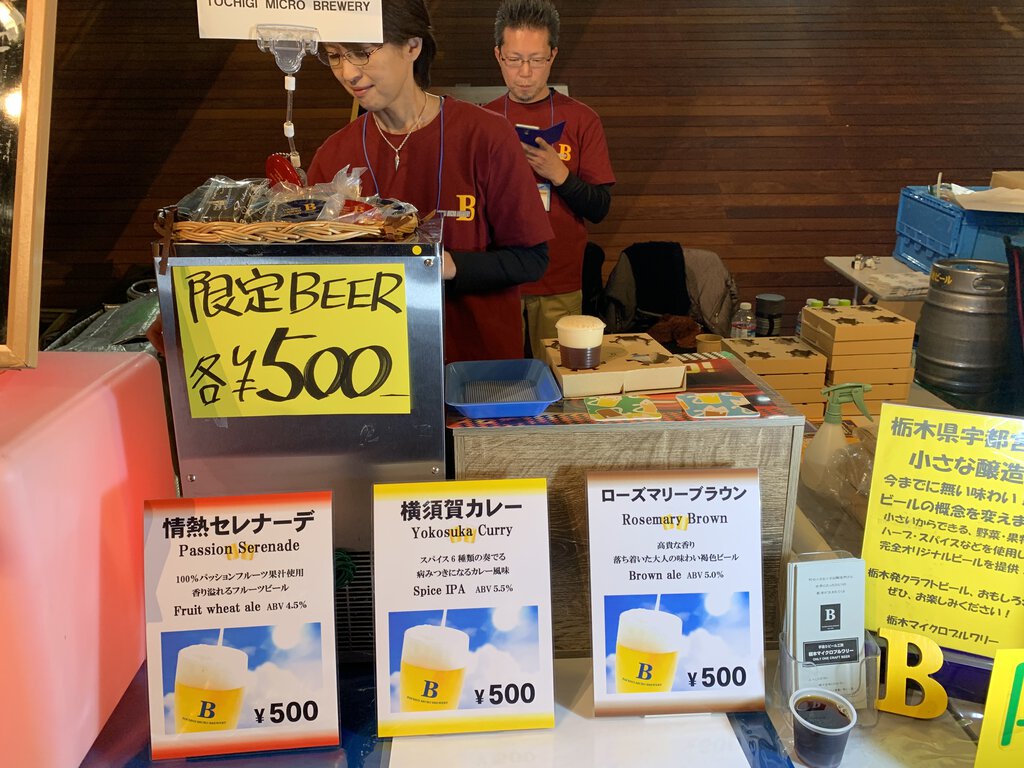
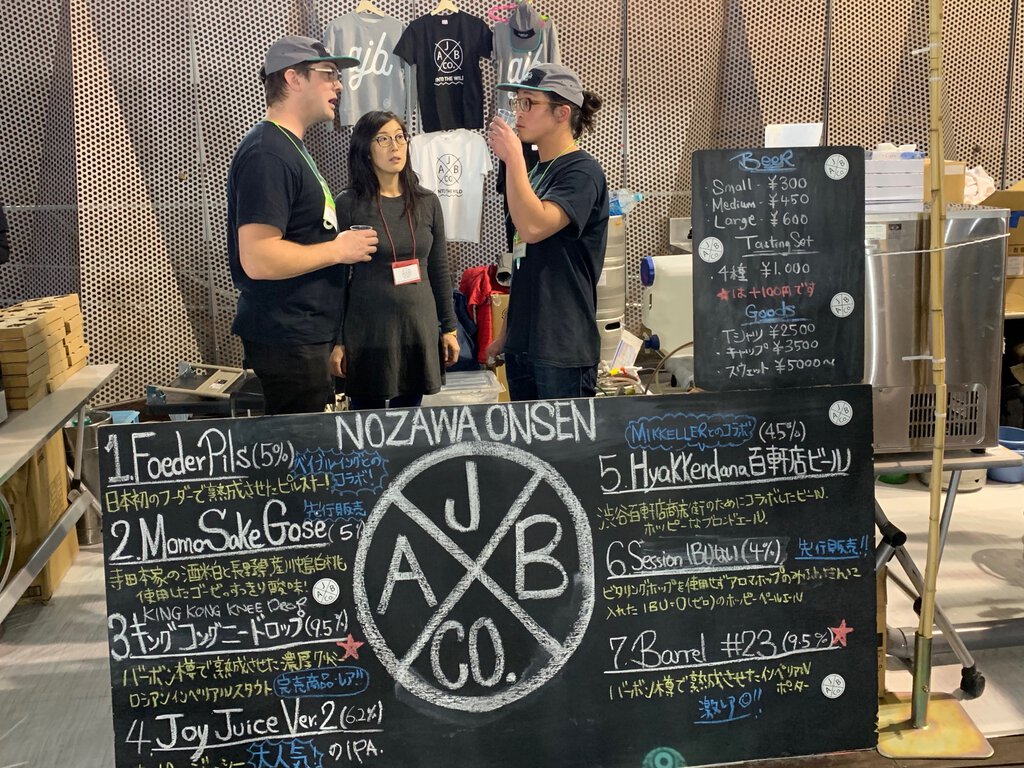
It had just won a prize as I walked past their stall. So I picked one up, though it’s not really in my uusual style gamut. Not much head. But that peanut butter and caramel really comes through on the palate. Sweet, basically, but there is a subtle toasty coffee, bitter backbone. It’s very good. Just not my thing. And now I have a pint of it (as there were no small pours available for this one :( ). This was my accidental non-Japanese brew.
I didn’t want to do this (I mean go non Japanese). But as a keen saison brewer, with rare access to Saison Dupont, I cound't resist. So here goes. Firm, rocky head. Small funky leather and fruit on the nose. In the mouth, dry and hoppy with some dirtiness in the bitter end. I’m glad I tried this.
Cloudy, no head. Hoppy to the hilt, with citrus and some pine. Medium malt body, bitter finish. There's no sweetness here.
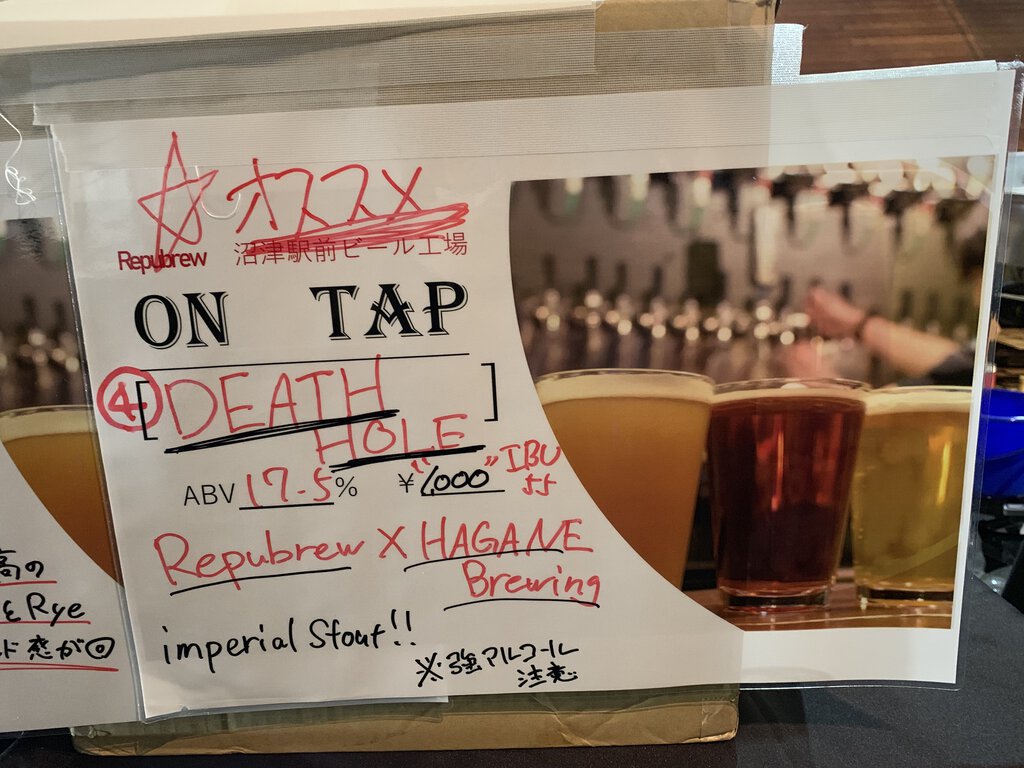
Along the way I also tasted a couple of the event’s stronger ales: Death Hole, a 17.5% Imperial Stout (collaboration between Repubrew and Hagane Brewing) and Pit Bull Barley Wine at 15% (Outsider Brewing). I have only slight recollections of them (sadly didn’t take notes), but recall enjoying the depth and boozy sweetness of the Imperial Stout.
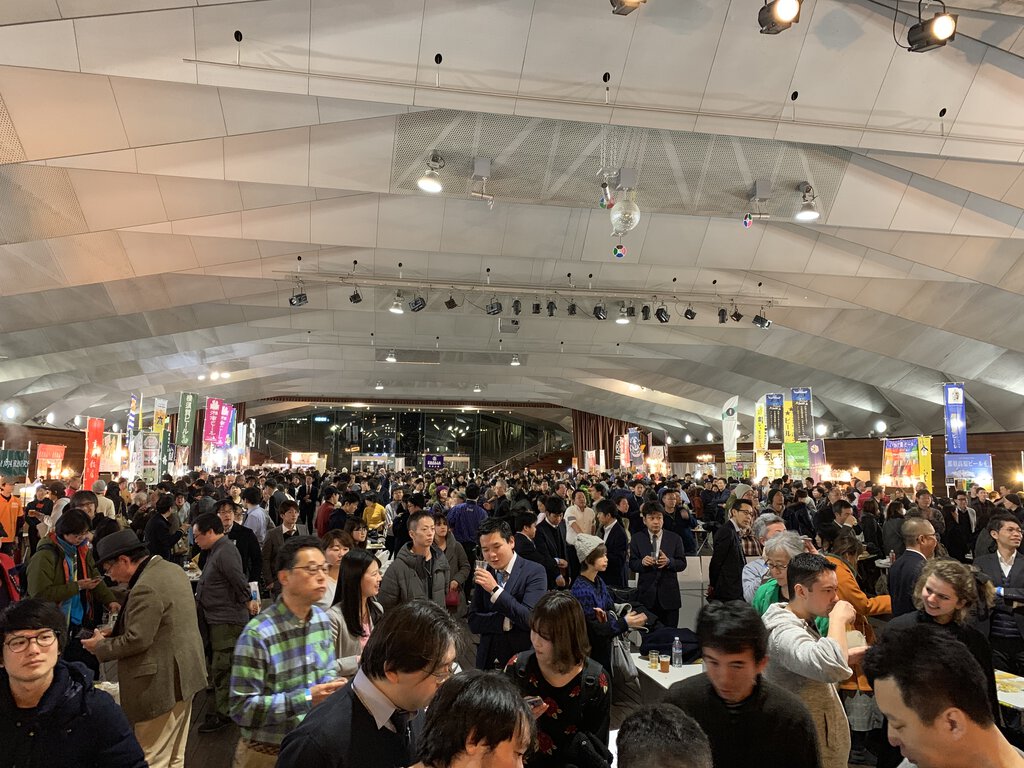
*
I started this write-up the night of the event. It’s exactly a week later now as I’m making it at least somewhat web-worthy. The details of a tasting session like this fade quickly. But the overall experience remains. It was exciting to discover just how developed craft brewing in Japan is. The variety is wide, there is creativity and playfulness, but there’s also wide mastery of the fundamentals on display - beautifully crafted ales and lagers.
No feedback yet. Share your thoughts.


No feedback yet. Share your thoughts.